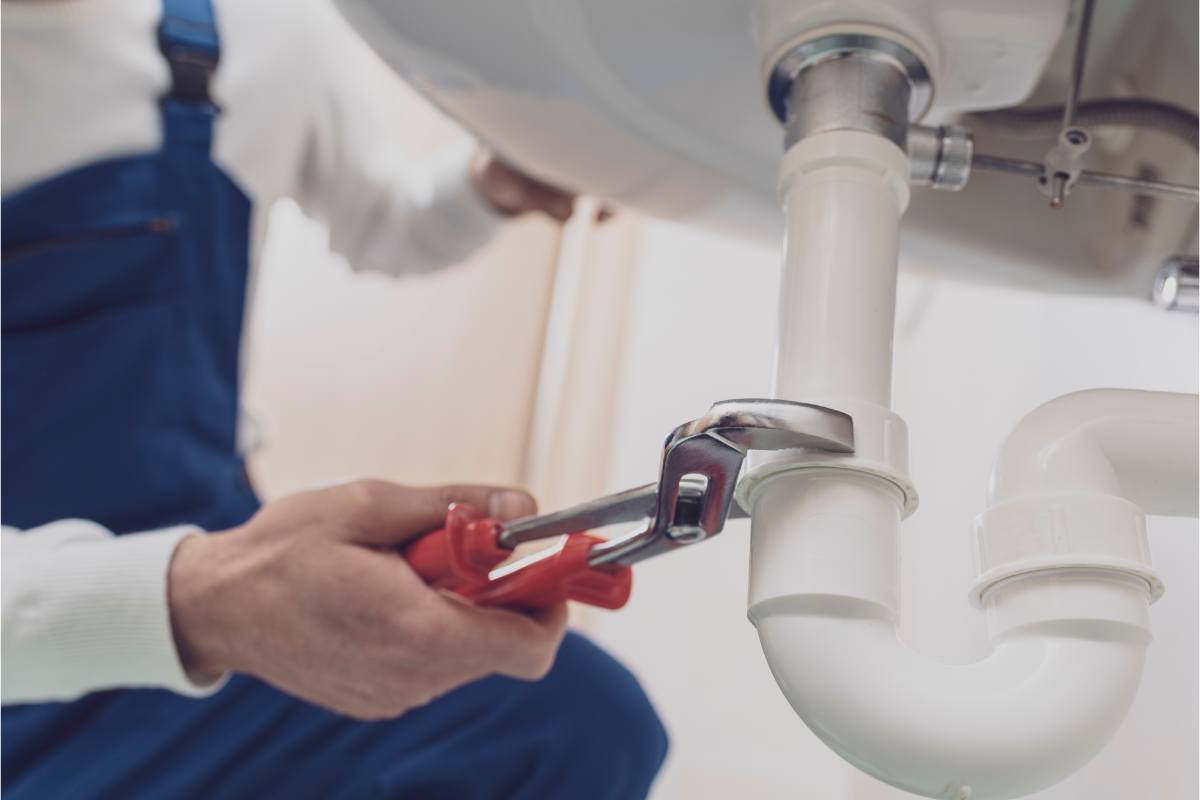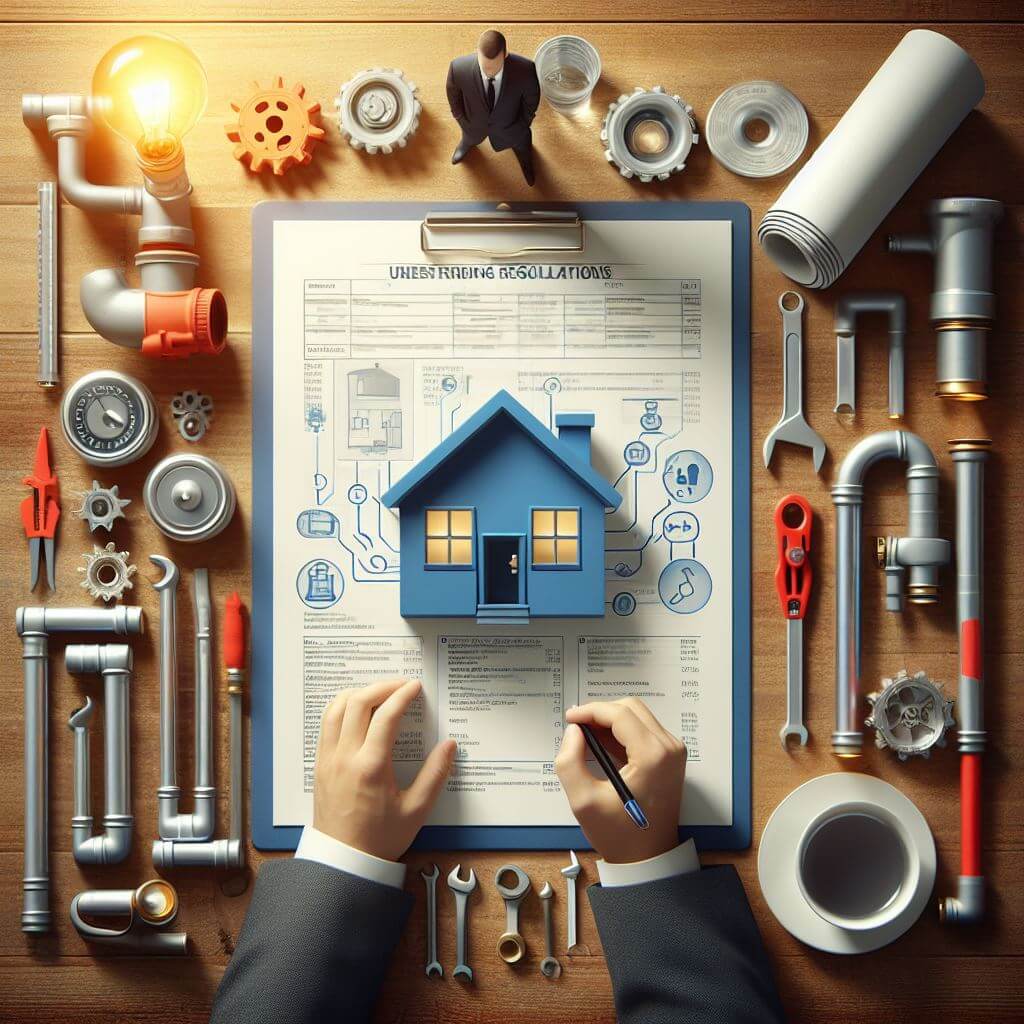We have stumbled on this great article on How Does the Plumbing Work in Your Home? down the page on the net and accepted it made good sense to talk about it with you over here.

Plumbing is a crucial aspect of any type of home, responsible for providing clean water for drinking, cooking, and showering, along with removing wastewater securely. Understanding the essentials of home plumbing is important for every homeowner to ensure correct upkeep, troubleshooting, and, if needed, repair services. In this beginner's overview, we'll cover the fundamental ideas of home plumbing to assist you come to be more accustomed to exactly how it works.
Water Furnace
The water heating unit is in charge of heating water for domestic use, including showering, food preparation, and cleaning. Usual types of water heaters consist of tank-type water heaters, tankless (on-demand) hot water heater, and heat pump hot water heater. The hot water heater is linked to the water system system and supplies warm water to plumbing fixtures as needed.
Water drainage System
The drainage system gets rid of wastewater from your home and carries it away to a sewage therapy center or septic system. It consists of a network of pipelines, fittings, and components that carry wastewater from plumbing fixtures to the primary sewer line or septic system. Appropriate water drainage is essential to protect against blockages, backups, and sewer leakages.
Ventilation System
The ventilation system helps maintain proper atmospheric pressure and prevent sewer gases from entering your home. Air vent pipelines, likewise referred to as air vent stacks, extend from plumbing components to the roofing system, enabling sewer gases to escape securely outdoors. Air flow pipelines additionally allow air to get in the water drainage system, helping with smooth wastewater circulation and preventing suction or vacuum impacts.
Supply Of Water System
The water supply system brings tidy water into your home from a community water source or an exclusive well. It consists of a main water line that attaches to your home's plumbing system, normally situated underground. A water meter measures the amount of water eaten, while a shut-off shutoff enables you to regulate the flow of water into your home.
Plumbing Fixtures
Plumbing fixtures are gadgets that deliver water to numerous parts of your home and consist of sinks, taps, commodes, showers, bath tubs, and appliances such as dishwashing machines and washing equipments. Each component is attached to the water supply system via pipes and installations and might have its shut-off shutoff for upkeep or emergencies.
Typical Plumbing Tools
Having the right devices handy is necessary for executing standard plumbing repair services and maintenance tasks. Typical plumbing devices consist of flexible wrenches, pipe wrenches, pliers, pipeline cutters, hacksaws, bettors, augers (or drainpipe serpents), and Teflon tape. Having these devices readily offered can assist you tackle small plumbing issues efficiently.
Basic Plumbing Repairs
While some plumbing repairs may require specialist aid, lots of typical issues can be addressed with basic do it yourself strategies. Learning exactly how to repair a dripping faucet, unclog a drainpipe, change a bathroom flapper, or repair a leaking showerhead can save you time and money on plumbing repair work.
Verdict
Understanding the basics of home plumbing is necessary for every property owner to maintain a safe, functional, and efficient plumbing system. By familiarizing on your own with the water system, plumbing components, water drainage system, ventilation system, typical plumbing devices, and standard fixings, you can confidently attend to small plumbing problems and guarantee your home's plumbing system runs smoothly.
Plumbing for Beginners: A Comprehensive Guide
If you’re a beginner when it comes to plumbing, don’t worry; you’re not alone. Plumbing may seem intimidating, but with the right knowledge and a little practice, you can handle many common plumbing issues on your own. In this comprehensive guide, we will demystify the world of plumbing for beginners, providing you with the basic knowledge and skills needed to tackle common plumbing problems and even take on some DIY plumbing projects.
The Importance of Basic Plumbing Knowledge for Beginners:
First and foremost, basic plumbing knowledge gives you a solid foundation. It helps you grasp the key concepts and terminology that are essential in this field. By learning the basics, you’ll be able to build upon that knowledge and tackle more complex plumbing tasks in the future.
Having a basic understanding of plumbing also enables you to handle common issues that may arise in your home. Picture this: a leaky faucet or a clogged drain. With some basic plumbing knowledge, you’ll have the confidence to troubleshoot and fix these problems on your own. It saves you from unnecessary expenses and the hassle of waiting for a professional to arrive.
As a beginner, learning the basics of plumbing empowers you to take care of your own home. It gives you a sense of independence and self-reliance. You’ll no longer have to rely solely on professionals for every small issue that pops up. Instead, you can handle many tasks yourself, saving time and money in the process.
Remember, everyone starts as a beginner. Embrace the learning process and take small steps to expand your plumbing knowledge. There are plenty of online resources, tutorials, and even local workshops that talk about plumbing for beginners.
Essential Tools for Plumbing for Beginners
As you start your plumbing journey, having the right tools in your toolbox is crucial. Let’s explore some of the must-have tools:
Adjustable Wrench:
This versatile tool is a staple in any plumber’s toolbox. It allows you to tighten or loosen nuts and bolts of various sizes. Make sure to have an adjustable wrench with a comfortable grip.
Pipe Wrench:
A pipe wrench is specifically designed for gripping and turning pipes. It has serrated jaws that provide a strong grip, making it easier to loosen or tighten threaded pipes and fittings.
Plunger:
The plunger is a simple yet effective tool for clearing clogged drains and toilets. It creates suction when you push and pull, helping to dislodge blockages. Keep a good-quality plunger handy for those unexpected clogs.
Pipe Cutter:
When it comes to cutting pipes, a pipe cutter is your go-to tool. It creates clean, precise cuts without damaging the pipe. Look for a pipe cutter that can handle the pipe sizes you’re working with.
Hacksaw:
A hacksaw is useful for cutting through pipes, screws, and other materials. It’s a versatile tool that can handle different cutting tasks. Remember to use a blade suitable for cutting metal.
Tape Measure:
Accurate measurements are crucial in plumbing. A tape measure allows you to measure pipe lengths, distances, and dimensions accurately. Opt for a sturdy tape measure that extends a good length.
Pliers:
Pliers come in handy for various tasks, such as gripping, bending, and cutting. Slip-joint pliers with adjustable jaws are great for gripping pipes, nuts, and bolts.

As a keen person who reads about Plumbing basics: How your home plumbing works, I figured sharing that piece of writing was worth the trouble. Liked our entry? Please share it. Help somebody else locate it. I recognize the value of your readership.
Free Estimate